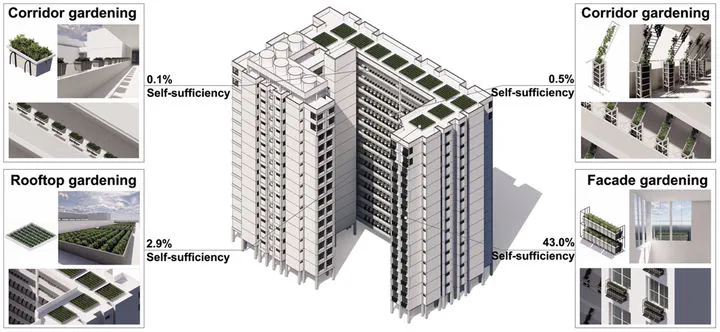Home gardening in Singapore: A feasibility study on the utilization of the vertical space of retrofitted high-rise public housing apartment buildings to increase urban vegetable self-sufficiency

Abstract
In land-scarce cities, high-rise apartment buildings may provide vertical spaces for natural-light home gardening along corridors, rooftops, balconies as well as façades. The vertical space can improve not only urban environmental sustainability but also food security. Using an experimental approach, we investigated the food production potential of a high-rise public housing apartment building based on different gardening systems, food crops, and sunlight availability. A gardening prototype system for building corridors was shown to increase the unit area yield of corridor gardening by fivefold compared to a commercial trough planter system. Additionally, this commercial trough planter system was mainly for leafy vegetable production, whereas the gardening prototype system for corridors is also suitable for climbing crops, such as legumes and cucurbits. Nevertheless, because of the limited space along corridors of the apartment building and the relatively low-light levels on average, corridor gardening was estimated to meet only 0.5 % of the demand for vegetables of the residents living in the apartment building. Rooftop gardening with shallow growing medium (depth < 15 cm) was estimated to meet 3 % of demand, and façade gardening 43 %, given the larger space available. Although the vegetable production potential in this study was estimated based on a particular typology of public housing apartment buildings in Singapore, our results showed that vegetable production in public housing apartment buildings is feasible, and home gardening can produce a substantial amount of vegetables for consumption if well deployed. Governments of highly urbanized cities may wish to invest in better home garden designs for high-rise public housing apartment buildings and encourage residents’ participation in home gardening, which would increase high-rise greenery coverage and improve urban food system resilience. Future studies should also investigate the environmental sustainability and food safety aspects of home gardening in highly urbanized cities.